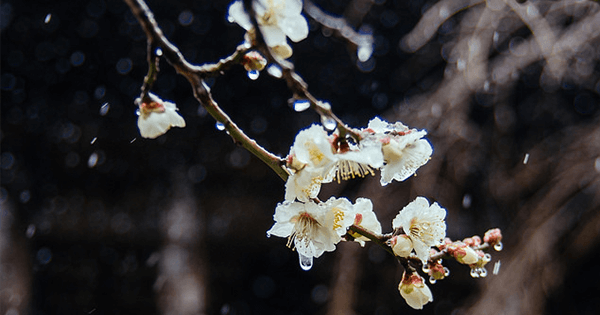
Last Friday, I went for a short walk at lunchtime, to look at a few of the cherry trees in the vicinity of my office. The exceedingly warm February days—the warmest I can recall in the two decades I’ve lived in Washington—had agitated the trees into a premature, partial bloom, but that day, the temperature had dropped since morning and light snow had begun to fall. I stared at those pale blossoms, still tightly furled against the backdrop of a dull gray sky. Although their peak bloom date was not far off, their fate now appeared to be imperiled. It occurred to me, as I shivered in the cold, that the flowers themselves were being held in some kind of suspended state, poised between life and death, future and past, unsure of what to do next. With this week’s snowstorm, and with temperatures plunging well below freezing, some 90 percent of the region’s cherry blossoms, adorning thousands and thousands of trees, are all but certain to die. Springtime in Washington isn’t the same without the ritual explosion of pink and white, and the absence of all that color seems somehow apt in a year in which every day brings some omen great or small.
At any rate, the image of those blossoms holding fast in the snowfall stayed with me, and afterward, it felt as if I had been outside all day staring at the flowers, when I had only been out for half an hour or so. Wanting to listen to some music that reflected my strange, unsettled mood, I started thinking of pieces that had a similar effect on me, pieces that created the illusion, that is, of elongated time. A few Anton Bruckner adagios came to mind, as did Morton Feldman’s Rothko Chapel. But the composer who seems best to evoke the sensation I’d had while gazing at the cherry trees is Toru Takemitsu (1930–1996). Born in Japan, Takemitsu heard his first notes of western classical music on American armed services radio, just after the Second World War. Largely self-taught, he came to the attention of Igor Stravinsky, who marveled at his Requiem for strings in 1959, and later Aaron Copland, who declared him to be “one of the outstanding composers of our time.” Takemitsu, to this day Japan’s most celebrated composer, wrote in a diverse array of styles, very much an avant-garde artist at first, but one who later composed tonal music, too, his scores dripping with the influences of Claude Debussy and Olivier Messiaen. He was a superb orchestrator, highly sensitive to the full range of instrumental color, and many of his works incorporated the sonorities of both Japanese and Western instruments. But it is the timeless quality of his music that has held the greatest appeal for me these last several days. Takemitsu’s best pieces are so carefully conceived that they seem almost without structure—we forget that such music was created by a steady hand dividing notes into measures, grouping them rhythmically, organizing the raw materials of sound and pitch into phrases and lines. His tempos tend to be slow, the experience of the listener akin to drifting through an extended dream. His 1993 work Archipelago S., for example, conveys a Messiaen-like feeling of desolation, the hypnotic repetition of pattern and rhythm at the end of the piece suggesting a feeling of the infinite.
Much of Takemitsu’s music may have been inspired by gardens, water, flowers, and trees, yet very little of it is explicitly pictorial. “Although I think constantly about the relationship of music to nature,” he once wrote, “for me music does not exist to describe natural scenery.” One prominent exception, however, is his exquisite orchestral work called Winter, composed in 1971 on the occasion of the Sapporo Winter Olympics. As I turned this music on the other day, the wind was shaking the branches of the massive hickory tree in my back yard and the snow was falling in swirls—the eerie chill of Takemitsu’s snowy landscape, at once delicate and harsh, seemed inviting, given the context. The music shimmers, with the string harmonics sounding like a sustained, high-pitched wind, both burning and cold. The winds pick up, beginning to whirl, as we hear the dissonant slides, or glissandi, in the strings. The flurry of plucked strings (pizzicati) that follows suggests the noise of cracking ice. There are hints of a greater storm to come, yet the sound of the chimes—twinkling distant lights in the expanse of darkness—brings comfort and relief. This is music that shares almost nothing with the French Impressionists who influenced so much else that Takemitsu wrote. Instead, I hear something of the lyrical intensity of Anton Webern’s miniatures and the sonorous opulence, in the wonderful exploitation of the mallet percussion instruments, of Pierre Boulez’s modernist masterpiece Le Marteau sans maître. It is a dissonant, modernist sound world, and though only seven minutes long, the music seems never to end. It’s the illusion of the infinite: time expressed by nature itself, and not the artificer who seeks to master it.

